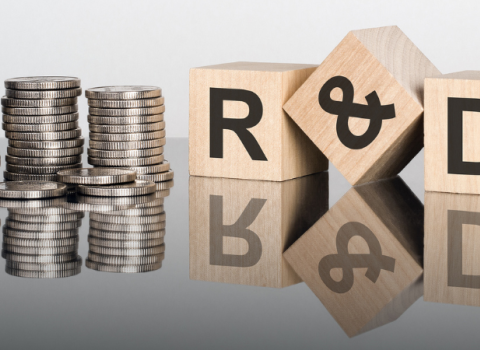Fraunhofer-Gesellschaft's presentation of its roadmap on a circular bioeconomy in Brussels on September 20, 2023, reflected the shared commitment of Fraunhofer experts and EU stakeholders to achieve a sustainable, competitive, and bioeconomic future. As Peter Wehrheim (Head of Unit, DG RTD, European Commission) emphasized in his keynote speech, Fraunhofer’s response and contribution aligns well with the European Bioeconomy Strategy. Both initiatives take a holistic approach, combining the scientific and technological potential of the bioeconomy with economic, social, and ecological challenges.
The roadmap provides recommendations for political action to accelerate the development of innovative solutions for sustainability and resource efficiency and the market ramp-up of bio-based products and technologies.
Following the presentation of the Fraunhofer roadmap by Markus Wolperdinger (Director Fraunhofer IGB) and Alexander Böker (Director Fraunhofer IAP) and the keynote by Peter Wehrheim on the current political discussion, participants and Fraunhofer experts engaged in four interactive workshops to further discuss the following topics of the roadmap and enhance the understanding of a circular bioeconomy across the EU:
- A sustainable food system requires not only an understanding of the complex and intertwined global food system, but also new technologies, agricultural practices, and alternative food sources and planning strategies to substantiate food security and resilience. Challenges stemming from these new approaches must be addressed by the research community and policies with a focus on creating a reliable regulatory framework and promoting acceptance of healthy and sustainable diets.
- The transition of linear and fossil-based value chains in the plastics industry requires the development of circular solutions, such as efficient recycling, reuse, and the substitution of bio-based plastics. The competitiveness of bio-based products and related regulations, such as restrictions on fossil-based plastics and reduced carbon footprint, are crucial factors in this transition.
- Addressing the global demand for carbon and the limitation of biomass as a renewable resource involves exploring sustainable materials like microalgae and utilizing carbon as a raw material. For example, microalgae cultivation as a fast-growing biomass source can lead to new application areas. However, this requires accommodating RD&I gaps on utilizing CO2 point sources, establishing green production routes, and demonstrating scalability through pilot projects; and implementing an enabling political framework.
- The technological pathways toward a circular bioeconomy also necessitate a socio-economic transition. This involves coordinating policies at different levels, defining the European bioeconomy strategy more precisely, and addressing the complexity of stakeholder interests.
Fraunhofer-Gesellschaft is committed to continuing the development and deployment of innovative solutions, with the support of politics, industry, and the public. This will ensure that the potential of a circular bioeconomy is not only talked about but will materialize and contribute directly to Europe’s climate and sustainability goals.
This article was first published on 27 September 2023 by Fraunhofer-Gesellschaft.





 A unique international forum for public research organisations and companies to connect their external engagement with strategic interests around their R&D system.
A unique international forum for public research organisations and companies to connect their external engagement with strategic interests around their R&D system.